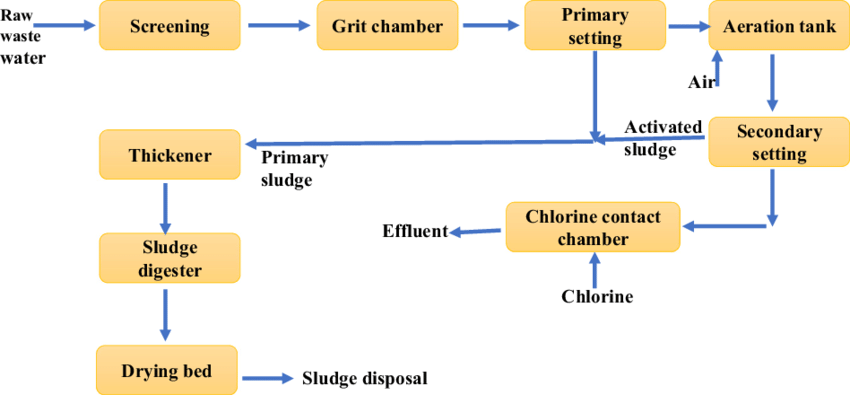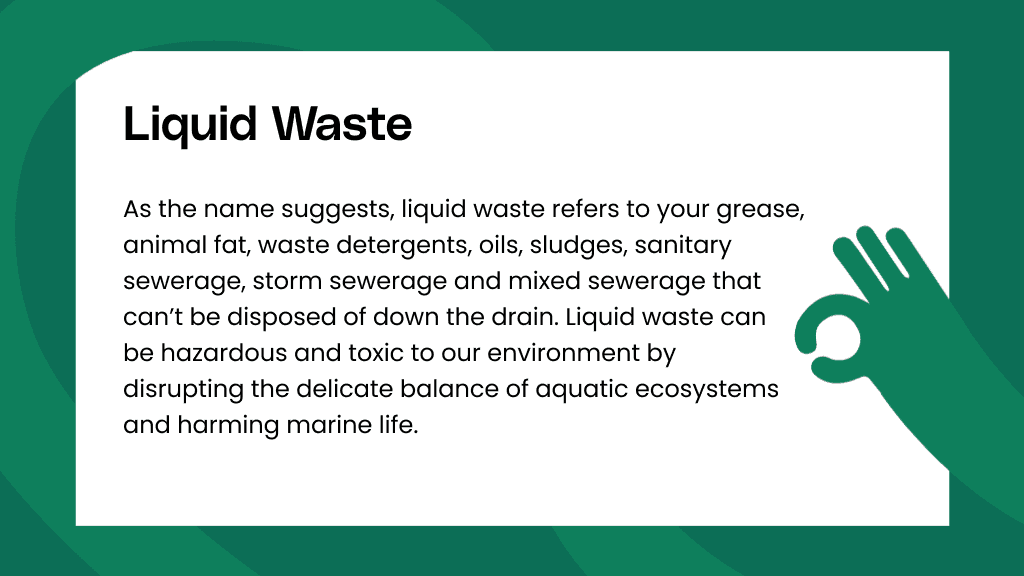The smart Trick of Reclaim Waste That Nobody is Talking About
Table of ContentsGetting The Reclaim Waste To WorkExcitement About Reclaim WasteRumored Buzz on Reclaim WasteThe Best Guide To Reclaim WasteReclaim Waste Can Be Fun For Everyone
Residential sewer waste refers to the waste and items from a household septic container. The proper monitoring and disposal of residential sewage waste need fluid waste to be transferred to a sewage therapy plant where the correct techniques and tools are used to purify and dispose of waste.
Business waste commonly includes possible threats, such as flammable materials or a blend of liquid and strong waste items, and calls for a much more advanced and thorough disposal procedure. The disposal of commercial waste generally entails the filtration of waste prior to transportation to make certain safe and correct disposal. Hazardous waste is created from byproducts and runoff of industrial procedures and manufacturing.
This type of waste can not make use of the very same sewage management transport or processes as septic or commercial fluids. The hazardous waste monitoring process needs the assessment and testing of liquid waste prior to it undertakes the disposal process (liquid waste disposal). Runoff waste is the fluid waste that originates from overflow and excess stormwater in extremely booming locations or cities
Overflow waste can create contamination and flooding otherwise taken care of correctly. Learn a lot more about sewer cleansing and waste monitoring. Ensuring appropriate waste administration can protect against calamities and decrease ecological injury. Both individuals in household settings and professionals in business or production sectors can gain from recognizing the processes and laws of liquid waste monitoring.
Top Guidelines Of Reclaim Waste
Contact PROS Services today to find out about our waste monitoring and disposal solutions and the proper ways to care for the fluid waste you create.
(http://tupalo.com/en/users/7813759)This so-called 'wastewater' is not only a crucial source however, after therapy, will certainly be released to our land, rivers or the sea. Made use of water from commodes, showers, baths, kitchen sinks, washings and industrial procedures is recognized as wastewater.

water utilized to cool machinery or clean plant and devices). Stormwater, a kind of wastewater, is overflow that moves from agricultural and urban locations such as roof coverings, parks, yards, roads, courses and rain gutters right into stormwater drains, after rainfall. Stormwater streams neglected straight to neighborhood creeks or rivers, at some point reaching the sea.
All About Reclaim Waste
In Queensland, most wastewater is treated at sewer treatment plants. Wastewater is transferred from residential or industrial websites with a system of drains and pump stations, called sewerage reticulation, to a sewer therapy plant. City governments construct, keep and operate most sewage therapy plants. Operators are certified under the Environmental Management Act 1994 to discharge treated wastewater at an acceptable environmental criterion into rivers.
The Division of Natural Resources advises neighborhood governments concerning handling, operating and keeping sewerage systems and therapy plants. In unsewered locations, local governments might need owners to set up private or family sewage treatment systems to deal with domestic wastewater from bathrooms, kitchen areas, washrooms and washings. The Department of Natural Resources authorizes using home systems when they are verified to be reliable.
A lot of stormwater receives no therapy. In some new neighborhoods, therapy of some stormwater to eliminate clutter, sand and gravel has begun utilizing gross contaminant traps. Wastewater therapy happens in 4 phases: Gets rid of solid issue. Bigger solids, such as plastics and other things wrongly discharged to sewers, are gotten rid of when wastewater is gone through screens.
Wastewater after that streams right into big containers where solids resolve and are gotten rid of as sludge. Oil and scum are skimmed from the surface area. Uses small living organisms recognizes as micro-organisms to damage down and get rid of remaining dissolved wastes and great bits. Micro-organisms and wastes are incorporated in the sludge. Removes nitrogen and phosphorus nutrients that might cause algal blooms in our waterways and endanger water life.
Not known Details About Reclaim Waste
Nutrient elimination is not readily available at all sewer therapy plants because it requires pricey specialised tools. Clear liquid effluent generated after treatment may still include disease-causing micro-organisms - liquid waste disposal.

This generally indicates wastewater has actually to be dealt with or impurities eliminated before it can be discharged to waterways. The majority of wastewater flows into the sewerage system. Under the Act, city governments provide authorizations and permits for this contact form environmentally pertinent activities (ERAs) involving wastewater releases that could have a neighborhood impact. The department carries out approvals and permits to ERAs involving wastewater launches that could have a local or statewide effect.
The Of Reclaim Waste
Monitoring offers valid information regarding water high quality and can confirm that licence conditions are being fulfilled. The details acquired through tracking supplies the basis for making water top quality decisions.